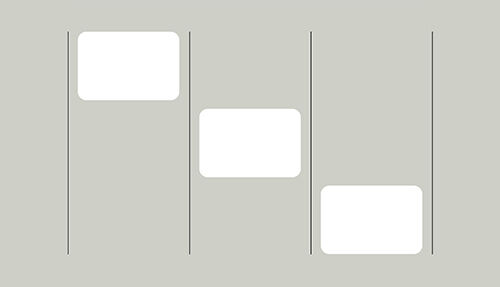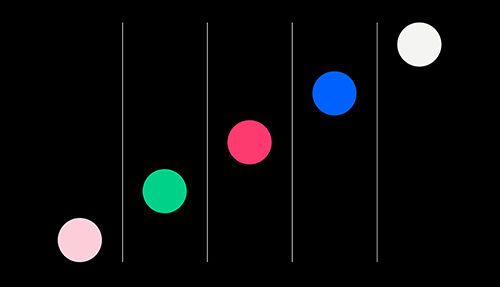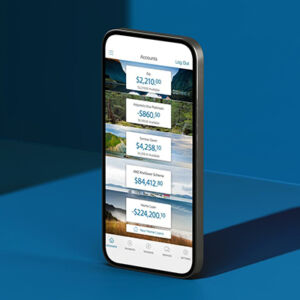The benefits of user testing for better products and happier customers

Creating great user experiences is a big part of what we do at Dave Clark. Whether that’s the experience a person has when doing their banking through an app, purchasing something on a website, or just being able to find something on a site. One of the best ways to know if consumers will have an easy, seamless process with your product or service is to do user testing before it’s live. I spoke with Sandra Hoogerbrug, one of our excellent UX designers, to find out more about the importance of user testing and the benefits that make it such a valuable tool.
Interview with Sandra
RB: Can you tell me what user testing is and why it’s so critical to good user experience?
SH: Of course. User testing is a really key part of the UX design process, and it’s important to the overall experience because it helps you see what’s working well, and where the pain points are. User testing helps you identify where you can improve things or create new ways to make a process easier.
One thing I always keep in mind when I’m designing is that I’m not the user. I design a product and I have the customer in mind obviously, but at the end of the day, I’m not the end user. It’s easy to develop biases because I’m so close to my projects. That’s why we do user testing. We talk to real people who see the product from a completely different perspective. By going outside, we see the real-world experiences people have and where we might have missed something.
Please go into more detail about what you discover during user testing.
When you create wireframes or a prototype – or even when you’re working on a piece of writing or design – you set it up and think, “Yeah, this makes sense, I know that the flow will work and the designs will be intuitive.” But until you actually get a customer or user to look at it, you don’t know how it’s going to be perceived. It’s fresh eyes, right? So you show an app design to a potential end user, they get stuck on something, and you realise that your logic isn’t the same as theirs. Or someone points out a spelling mistake and you’re like, “Wow, I looked at that a million times and didn’t spot it.” It always helps to take a fresh look and get other perspectives.
How do you set up user testing for a web or app experience and what’s the testing process exactly?
First we design the wireframes and create a prototype to test. Then we determine the goals we want to achieve with our testing. We spend a lot of time working on discussion scripts and scenarios to make sure we cover questions that will help meet our goals.
Next we start recruiting participants. We like to have 8-10 people in our user testing groups to get a good, diverse mix that represents our target audience. There’s a lot of work that goes on behind the scenes before we even start a testing session. We check the tech, set up the room for each person, do dry runs. We want to make sure each session runs as smoothly as possible.
Each session usually takes about an hour give or take. We start by getting to know the participant. We chat about their backgrounds and their experiences with using similar products. Then we get into the actual testing scenarios and have them work through the tasks. We have several tools we can use during each session. One we often use is product reaction cards. We give users a list of 30-40 words which includes positive, neutral or negative ones, and we ask them to choose five they would use to describe the product. It’s a very valuable tool because it takes very little time to carry out, and when we synthesise the findings, we can easily see how often the same words or closely related words are selected.
We also pay close attention to everyone’s body language. If a button that says ‘Continue’ is displayed and someone hovers over it because they’re not sure if their credit card will be charged or what to expect next, that hesitancy means they have doubts, and that’s not a good experience.
After the sessions are done, we analyse the data we’ve collected. We see where the designs worked well and where they didn't. Here’s where the pain points and opportunities come out. There are always 'aha' moments where you're just like, “I can't believe we didn't say that.” Or “I’m surprised they didn’t know that.” But when it’s three or four people saying the same thing, you have to take a serious look at it. These results help us refine and improve the designs. It could be something small like moving a call to action or changing some wording that makes the difference. Or it could be as big as changing the entire flow or adding steps that you didn’t think about.
That’s the best benefit of user testing – understanding the different perspectives that people bring to this new experience you’re trying to create or improve for them.
What about iteration? Do you make changes and test again?
We like to do a couple of rounds of testing if we can. Early and often is the ideal because the earlier you test, the less refined your designs and the less wedded you are to them. We’ll do one round of designs, test them, make improvements, and then test again. This process does take time and costs money and I think that’s why it doesn’t always get included in the timeline or budget. Understandably, clients want to get things out quickly and I do have the knowledge that comes with my experience but I’m not necessarily in their target audience. Some sort of user testing is always valuable for getting feedback and making improvements.
You just touched on my next question: What are the pitfalls of not doing user testing?
Well, I know there are examples where a company has launched a product or feature and has done no testing, or only minimal user testing. If things don’t work as expected, customers could go elsewhere. And then you have to consider negative word of mouth too. That’s definitely a risk. There’s also the cost to consider – you’ve spent a lot of time and money developing the product, only to have to go back to the developers to fix things.
Most people equate user testing with online products or services. Do you recommend it for anything else?
Yes – definitely. We were tasked with naming a new product and creating branding for a client. We did both quantitative and qualitative research, so we could get actual user insights, and couple that with statistics. We started by showing people a range of names and asked them to tell us what the names meant to them. We used product reaction cards I mentioned before, as well as getting them to rank the names. This exercise helped us create a shortlist to take into the next round of testing for the branding.
Once we had the shortlist and logo designs, we sent out a survey to 100 people. We asked similar questions as in the first round of testing. We did the analysis on the testing sessions and surveys, and the final name and design we recommended was associated with positive reaction cards, as well as being highly ranked.
Testing names and logos is a great exercise because, just like with the digital side, people perceive things differently, and you want a name or design to resonate with the most people possible.
If someone is weighing up whether they should include user testing in their timeline, what do you recommend?
They should definitely talk to their research team or agency and try to include it. You’re never going to regret doing some form of user testing. As I said, there are informal ways to get really good insights. Even the smallest revelation is helpful when it comes to building better products and services for your customers.







